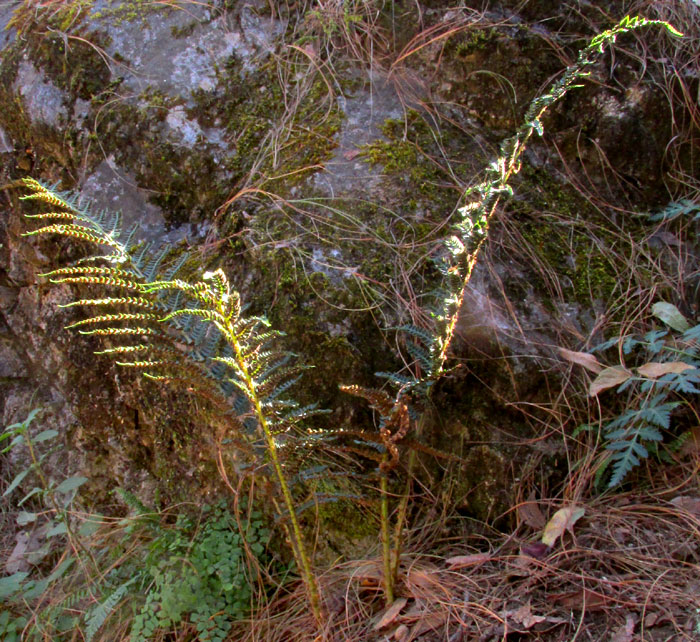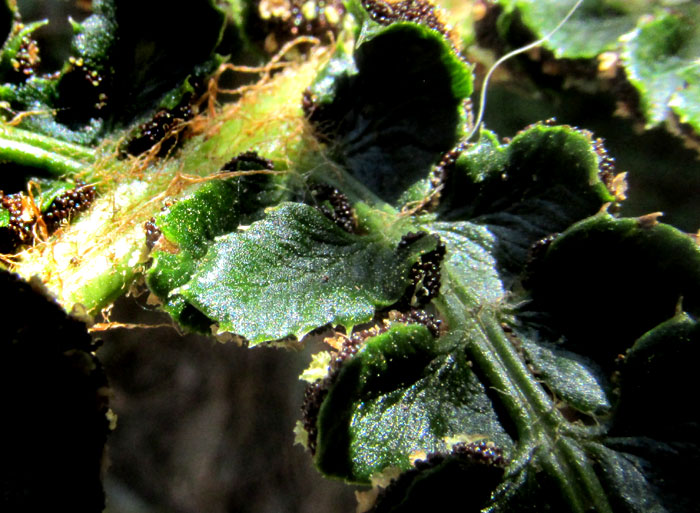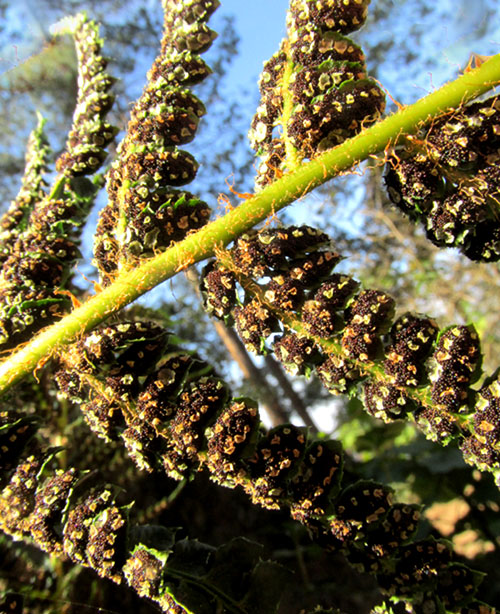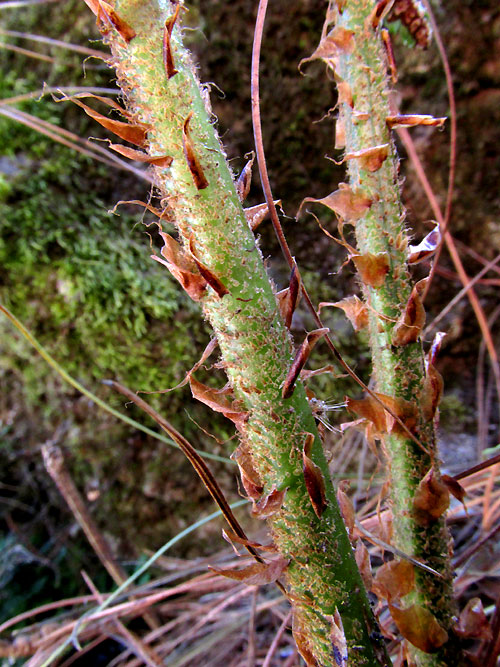Excerpts from Jim Conrad's
Naturalist Newsletter
entry from field notes dated January 19, 2023, taken along steep, one-lane gravel road ascending forested, northeast-facing mountain slope, elevation ±2,420m (7950 ft); bedrock of Cretaceous limestone; on the south side of Pinal de Amoles, Querétaro state, MÉXICO, (N21.134°, W99.629°)
POLYSTICHUM HARTWEGII

The above knee-high fern grew at the base of a rock outcrop along the trail in a spot usually shaded by tall pines and oaks. The fronds are twice-pinnate and the first subdivisions, the pinnae, gradually reduce in size both at the fronds' tops and bottoms. Here's a close-up of a frond's upper surface:

The frond's midrib, or rachis, is strikingly covered with long, soft, rusty-tinted hairs. The frond's final subdivisions, the pinnules, bear teeth along their margins. Even from the top, large numbers of tiny, black, shiny sporangia are seen pushing outward from the pinnules' undersurface. Here's a part of the sporangia-heavy frond seen from below:

And closer still:

The most telling field mark seen above is that the roundish, papery items -- the indusia -- strewn among the sporangia are attached to their pinnule's surface by a stalk at the center of the indusium, like a mushroom's cap atop its stem. Such round indusia attached at their centers are said to be "peltate." Most indusia are attached along their sides, and if they exist at all are longish and straight, to C-shaped, or even like a bowl, with the sporangia heaped inside it. Also, most indusia are white or silvery, so these tan-colored ones are distinctive. This fern's indusia are exceptionally large. Finally, keep in mind that each sandgrain-like sporangium contains 64 spores, so just imagine how many spores the whole fern is likely to release this season.
Finally, it's worth admiring the large, brownish scales ornamenting this fern's sturdy stipes:

This fern's peltate indusia, along with its twice-pinnate fronds, lead us to the swordfern genus Polystichum, familiar to North American fern appreciators in the form of the commonly occurring, evergreen-ornamental Christmas Fern. However, currently about 260 Polystichum species are known worldwide, mostly living on the ground or rocks in warm-temperate and tropical mountain regions, so when you find one, it's good to look closely, for it might be an interesting species.
The relatively large, tan-colored, peltate indusia distinguished our fern as POLYSTICHUM HARTWEGII, a species widespread from the uplands of central Mexico south through upland Central America into northwestern South America. In Mexico the species inhabits shady spots in mountain forests of pine and pine mixed with oaks and/or firs, at elevations of 1500-2900m (4900-9500ft). The species bears no English name, though all members of the genus Polystichum can be referred to as swordferns.
Polystichum hartwegii is one of those species appearing on many plant lists for specific locations, but there's little further documentation about it. And even here not much more can be said about the species than that it was where it was, doing what it was doing, and I enjoyed meeting it.